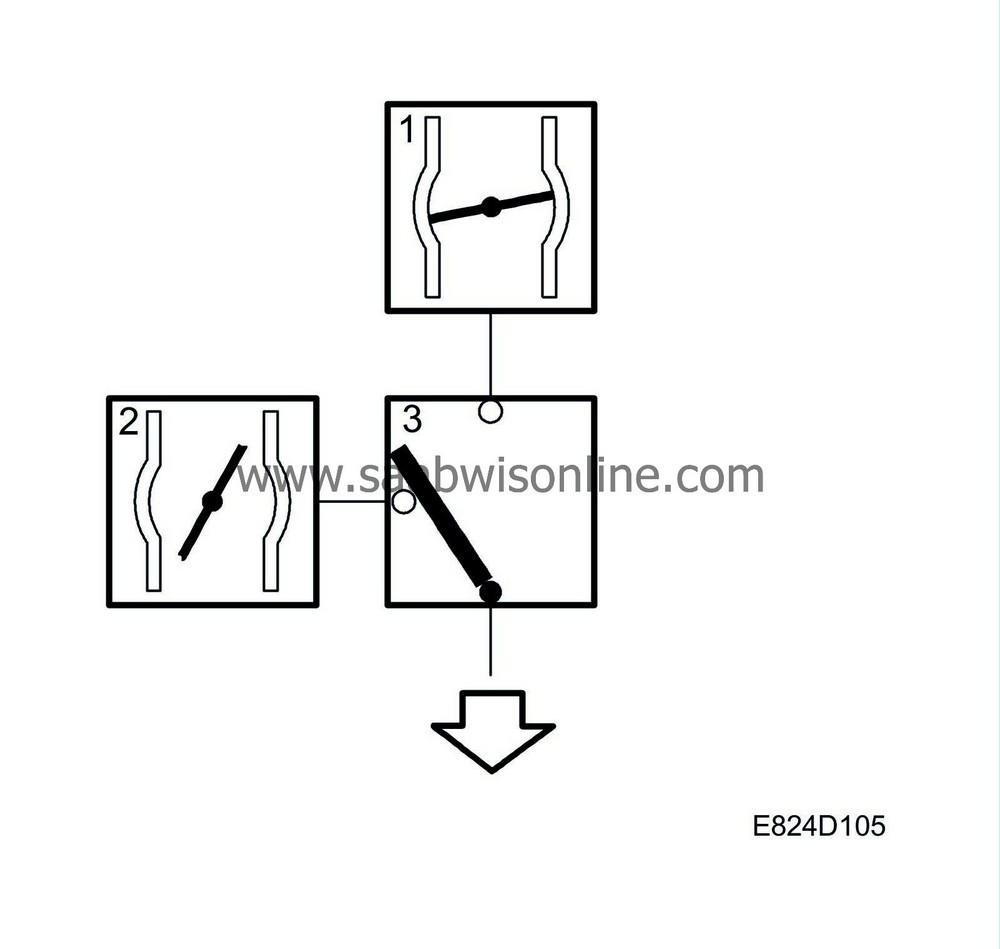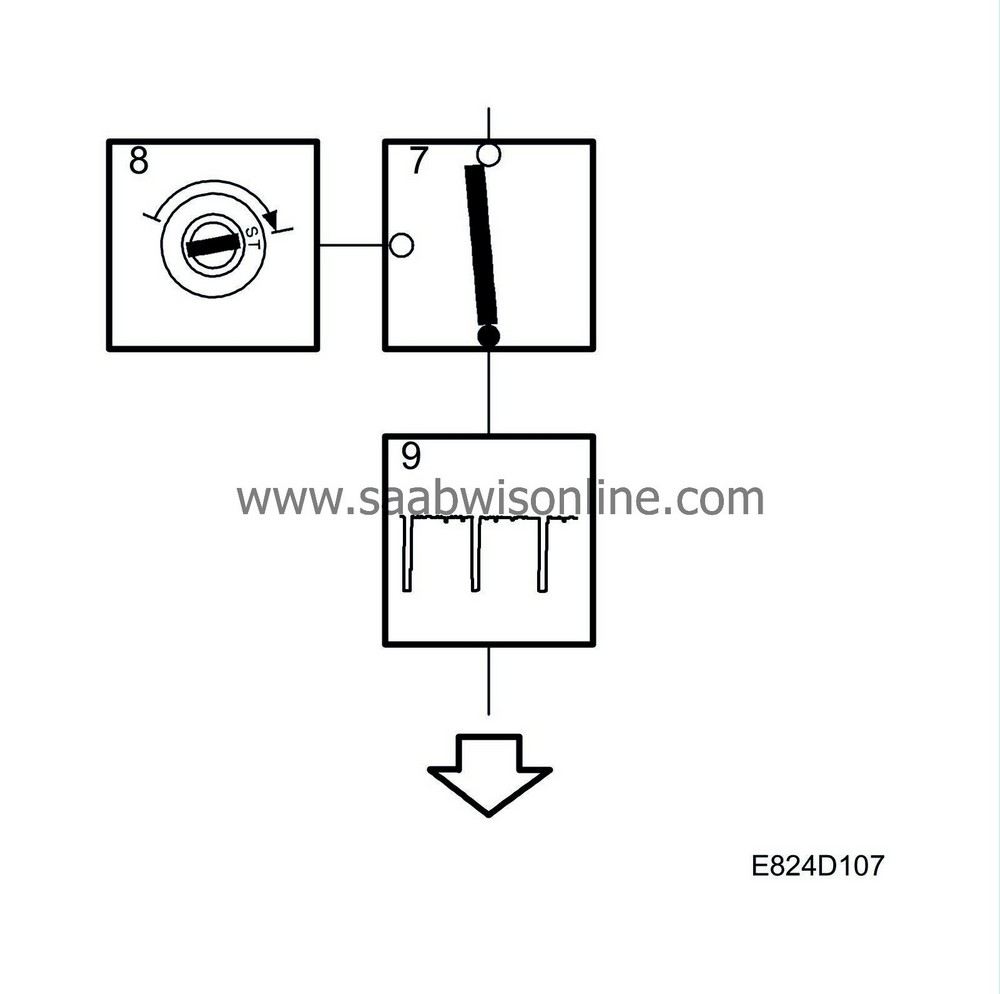Ignition, basic function
| Ignition, basic function |
| 1. |
Idling speed ignition timing
When the idle speed control is active, the ignition timing is adjusted to stabilize idling speed. The value is sent to box 3. 
|
|
| 2. |
Normal ignition timing
When the idle speed control is not active, the ignition timing is obtained from a load- and speed-dependent matrix. The matrix value is optimized for the lowest fuel consumption (best torque). The value is sent to box 3. |
|
| 3. |
Selection of ignition timing
One of the ignition timing calculations is selected, depending on which function is active. The value is sent to box 6. |
|
| 4. |
Compensation

The timing is corrected according to the coolant temperature and intake air temperature. The value is sent to box 6. |
|
| 5. |
Knock control
If knocking occurs, the amount by which the ignition should be retarded is calculated. The value is sent to box 6. |
|
| 6. |
Total
The compensation angle and knock retardation are totalled to give the current ignition timing. The value is sent to box 7. |
|
| 7. |
Selection of ignition timing
Starting ignition is selected when the engine has not yet started. The value is sent to box 9. 
|
|
| 8. |
Starting ignition timing
Starting ignition timing is calculated from the intake air temperature and the coolant temperature. The value is sent to box 9. |
|
| 9. |
Activate relevant trigger
At the calculated crankshaft angle, the microprocessor controls the transistor for the trigger which is next in the firing order. |
|


